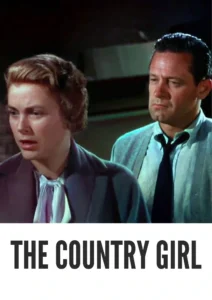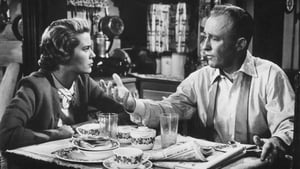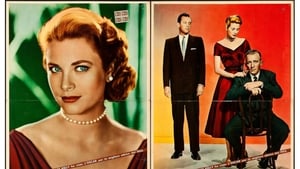Contact: info@alwanfilm.com
Video Sources 0 Views
- Watch trailer
- The Country Girl


The Country Girl 1954 Colorized
Synopsis
Table of Contents
ToggleDelving into Drama: The Country Girl 1954 Colorized – A Timeless Cinematic Review

Introduction
The Country Girl 1954, a poignant drama directed by George Seaton, remains an emblematic piece of old films, known for its profound narrative and stellar performances. As the film receives an early colored version, its significance in the annals of cinema history is further illuminated. In this review, we embark on a journey to explore how colorization impacts the viewing experience of The Country Girl 1954, delving into its themes, characters, and enduring legacy.
Check The Full Colorized Movies List
Check Our Colorized Movies Trailer Channel
Understanding The Country Girl 1954 Colorized: Director, Cast, and Genre
George Seaton’s vision for The Country Girl 1954 epitomizes the essence of drama in cinema. Anchored by the powerful performances of its cast, including Bing Crosby, Grace Kelly, and William Holden, the film delves into the complexities of human relationships and the pursuit of redemption. Within the realm of drama, The Country Girl 1954 stands as a testament to the enduring power of storytelling, captivating audiences with its raw emotion and compelling narrative.
Exploring the World of The Country Girl 1954 Colorized: Plot and Characters
Set against the backdrop of the theater world, The Country Girl 1954 follows the story of Frank Elgin, a once-great actor struggling with alcoholism and self-doubt, and his long-suffering wife, Georgie. When Frank is given a chance at redemption with a leading role in a Broadway play, tensions rise as Georgie and the play’s director, Bernie Dodd, clash over Frank’s ability to perform. As secrets are revealed and loyalties are tested, the characters are forced to confront their own demons and desires in a gripping tale of love, loss, and redemption.
The Art of Film Colorization
Film colorization, a controversial technique in cinema, has been a subject of debate among filmmakers and audiences alike. By adding color to black and white films, colorization seeks to modernize classic movies and appeal to contemporary audiences. However, purists argue that colorization can detract from the original artistic vision of the filmmaker and alter the intended mood and atmosphere of the film. Despite the controversy, early colored versions of classic films offer viewers a fresh perspective on beloved favorites, inviting them to experience these cinematic treasures in a new light.
Early Colored Films: A Brief History
The history of early colored films is a testament to the evolution of cinematic technology and artistic innovation. From the earliest hand-tinted silent movies to digitally colorized classics, filmmakers have experimented with adding color to black and white films for over a century. While early colorization techniques were often crude and labor-intensive, advances in technology have made it possible to create vibrant and lifelike colors that enhance the visual experience for modern audiences. Today, early colored versions of classic films offer viewers a unique opportunity to revisit cinematic history through a contemporary lens.
The Country Girl 1954 and Its Early Colored Version
The decision to release The Country Girl 1954 in a colorized format was met with both anticipation and apprehension. While some welcomed the opportunity to see the film in color, others expressed concern about tampering with a cinematic classic. However, the early colored version of The Country Girl 1954 succeeds in enhancing the film’s visual impact while staying true to its original spirit. By carefully selecting colors that complement the film’s emotional depth and dramatic intensity, the colorized version preserves the mood and atmosphere of the original while introducing it to a new generation of viewers.
The Debate Over Film Colorization
The debate over film colorization has raged on for decades, with proponents and detractors arguing over its artistic merit and historical significance. Supporters of colorization argue that it breathes new life into classic films, making them more visually appealing and accessible to modern audiences. They also point out that colorization can enhance the viewing experience, adding depth and dimension to the film’s visuals. However, opponents of colorization contend that it can detract from the original artistic vision of the filmmaker and alter the intended look and feel of the film. They also express concerns about the potential for colorization to erase the historical record and disrespect the legacy of filmmakers who created their works in black and white.
Examining The Country Girl 1954 as an Early Colored Film
In analyzing The Country Girl 1954 as an early colored film, it’s essential to consider how colorization impacts the viewing experience. While purists may prefer the original black and white version, the early colored version offers a fresh perspective on the film’s visuals, adding depth and dimension to the story. By carefully selecting colors that complement the film’s emotional tone and dramatic themes, the colorized version preserves the integrity of the original while introducing it to a new generation of viewers. Ultimately, whether one prefers the black and white or colorized version of The Country Girl 1954 comes down to personal preference, but both versions offer a compelling and immersive cinematic experience.
Influence and Legacy: The Country Girl 1954 Colorized’s Impact on Cinema
The Country Girl 1954’s influence on cinema extends far beyond its initial release, inspiring filmmakers and audiences alike with its powerful storytelling and unforgettable performances. The film’s exploration of themes such as redemption, forgiveness, and the power of love has resonated with audiences for generations, cementing its status as a timeless classic. As one of the quintessential dramas of old films, The Country Girl 1954 continues to captivate and inspire viewers around the world, leaving an indelible mark on the history of cinema.
Director’s Cinematic Legacy: Beyond The Country Girl 1954 Colorized
George Seaton’s legacy as a filmmaker extends far beyond The Country Girl 1954, with a body of work that includes some of the most beloved films in cinematic history. From his early days as a screenwriter to his later career as a director, Seaton’s influence on local and international filmmaking is undeniable. His keen eye for detail, nuanced storytelling, and ability to evoke powerful emotions from his audience have earned him a place among the greats of cinema, ensuring that his legacy will endure for generations to come.
Themes Explored in The Country Girl 1954 Colorized
The Country Girl 1954 delves into a myriad of themes, including the complexities of human relationships, the struggle for redemption, and the power of forgiveness. Through its compelling narrative and rich character development, the film explores the darker aspects of human nature while offering a message of hope and resilience. Themes of love, loss, and the pursuit of truth resonate throughout the story, inviting viewers to reflect on their own lives and relationships.
Reception and Controversy Surrounding The Country Girl 1954 Colorized
Upon its release, The Country Girl 1954 received widespread critical acclaim for its powerful performances, compelling storytelling, and emotional depth. The film was praised for its realistic portrayal of the complexities of human relationships and its exploration of taboo subjects such as addiction and self-doubt. However, it also sparked controversy for its depiction of sensitive issues and its unflinching portrayal of the darker aspects of human nature. Despite this, The Country Girl 1954 has come to be recognized as a classic of the drama genre, with its influence extending far beyond its initial release.
Where to Watch The Country Girl 1954 Colorized Online
For those eager to experience The Country Girl 1954 in its early colored version, the film is available on popular streaming platforms, offering viewers the opportunity to immerse themselves in the world of classic cinema from the comfort of their own homes. Whether seen in its original black and white format or in vibrant color, The Country Girl 1954 continues to captivate audiences with its gripping storytelling and powerful performances.
FAQs About The Country Girl 1954 Colorized
Q: Is The Country Girl 1954 based on a true story?
A: The Country Girl 1954 is a work of fiction, although it draws inspiration from real-life events and societal issues. Director George Seaton crafted a compelling narrative that explores the complexities of human relationships and the struggle for redemption, offering viewers a thought-provoking glimpse into the world of theater and the human condition.
Q: What makes The Country Girl 1954 stand out from other films of its time?
A: The Country Girl 1954 stands out for its powerful performances, compelling storytelling, and emotional depth. Director George Seaton’s keen eye for detail and his ability to evoke powerful emotions from his audience set the film apart from other dramas of its time, making it a timeless classic that continues to resonate with audiences today.
Q: How does the early colored version of The Country Girl 1954 compare to the original black and white version?
A: The early colored version of The Country Girl 1954 offers a fresh perspective on the film’s visuals, adding depth and dimension to the story. By carefully selecting colors that complement the film’s emotional tone and dramatic themes, the colorized version preserves the mood and atmosphere of the original while introducing it to a new generation of viewers. However, some purists may prefer the original black and white version for its timeless aesthetic and artistic integrity.
Q: What was the critical reception of The Country Girl 1954 upon its release?
A: The Country Girl 1954 received widespread critical acclaim for its powerful performances, compelling storytelling, and emotional depth. The film was praised for its realistic portrayal of the complexities of human relationships and its exploration of taboo subjects such as addiction and self-doubt. Despite sparking controversy, The Country Girl 1954 has come to be recognized as a classic of the drama genre, with its influence extending far beyond its initial release.
Q: Who was involved in the production of The Country Girl 1954?
A: The Country Girl 1954 was directed by George Seaton, who brought his unique vision and sensibility to the film. The cast included Bing Crosby, Grace Kelly, and William Holden, whose performances earned widespread acclaim. Together, they created a timeless classic that continues to resonate with audiences around the world.
Conclusion
In conclusion, The Country Girl 1954 stands as a timeless masterpiece that continues to captivate audiences with its powerful performances, compelling storytelling, and emotional depth. Whether seen in its original black and white format or in its early colored version, the film offers a thought-provoking exploration of the complexities of human relationships and the struggle for redemption. As one of the quintessential dramas of old films, The Country Girl 1954 remains a must-see for cinephiles and casual viewers alike, offering a timeless glimpse into the human condition and the enduring power of cinema.












